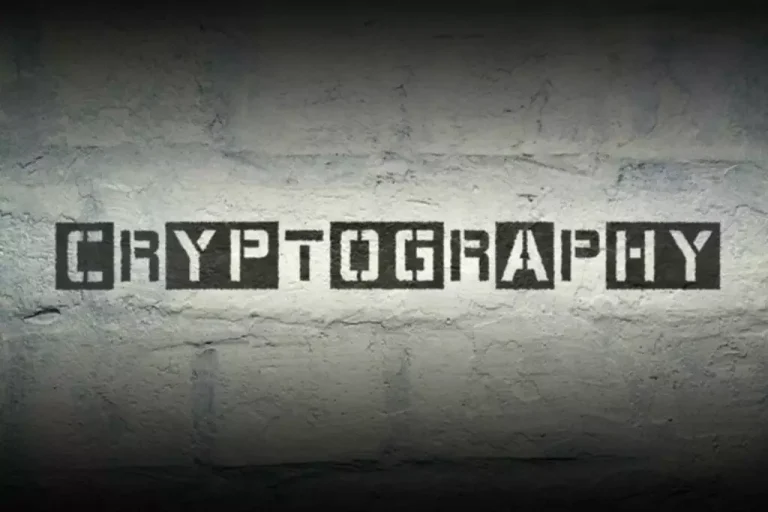- July 25, 2024
- Posted by: info@whatsdown.in
- Category: FinTech
Content
In this case, a smart contract would likely transfer your cryptocurrency to the retailer and initiate another Volatility (finance) script that notifies the shipping department of a sale. Following are some real-world examples of smart contracts and the drawbacks of using them in an enterprise blockchain project. Smart contracts are programs that execute based on specified logic and agreements. These programs run on decentralized networks whose ledgers cannot be tampered with or changed after registering a transaction. Smart contracts have opened up a world of possibility for the many use cases of blockchain that we see today. As the technology develops, it’s beyond doubt that smart contracts will become as much a part of our everyday lives as the internet.
Blockchain Case Studies from Different Industries
Any developer can create a smart contract and deploy it on a public blockchain for their own purposes, e.g., a personal yield aggregator that automatically shifts their funds to the highest-earning application. However, many smart contracts involve multiple independent parties that may or may not know one another and don’t necessarily trust one another. The smart contract defines exactly how users can interact with it, involving who can interact with the smart contract, at what times, and what inputs result in what outputs. The result is multi-party digital agreements that evolve from today’s probabilistic state, where they will probably execute as desired, to a new deterministic state where they are guaranteed to execute according to their code. Many experts postulate that the fields of AI and blockchain may benefit from each other’s defining characteristics. In 1994, American computer scientist and cryptographer how do smart contracts work Nick Szabo coined the term “smart contracts” while attempting to execute the terms of a contract using computerized transaction protocols and a distributed ledger.
Traditional Contracts vs. Smart Contracts
The opinions and views expressed in any Cryptopedia article are solely those https://www.xcritical.com/ of the author(s) and do not reflect the opinions of Gemini or its management. The information provided on the Site is for informational purposes only, and it does not constitute an endorsement of any of the products and services discussed or investment, financial, or trading advice. A qualified professional should be consulted prior to making financial decisions.
examples and use cases of smart contracts
Creating corporate compliance policies may help mitigate losses due to internal and external threats. Some of the risks include blockchain network attacks, cryptojacking and human incompetence. These hybrid smart contracts use Chainlink to combine on-chain code with off-chain infrastructure—e.g., trigger a smart contract with external data or settle a contract off-chain on a traditional payment rail. The key difference between these blockchains is the ability of an underlying blockchain to execute and store arbitrary logic. Smart contracts are a powerful infrastructure for automation because they are not controlled by a central administrator and are not vulnerable to single points of attack by malicious entities.
Blur and Uniswap are marketplaces where smart contracts replace any central authority to ensure permissionless on-chain trading. Non-fungible tokens (NFTs) are majorly based on the ERC-721 token standard on Ethereum. NFT smart contracts manage NFTs by ensuring the contract address, uint256, and tokenId are globally unique. The contract contains functions for minting, transferring, and inquiring about token ownership, and is pivotal in domains like digital art and collectibles. The main point of smart contracts is that they provide an effective way of verifying, enforcing, and executing predetermined conditions set between two parties.

Distributed ledger technology also aids the preservation and availability of files since copies of the ledger are maintained across numerous servers. The certificate’s public key is scanned on the explorer in this case, and since the DLT cannot be altered, the certificate’s authenticity can be trusted. Certificate and document forgery has been a significant issue individuals and institutions have faced for years.
Smart contracts offer profound utility to both centralized and decentralized organizations. The efficiency they introduce is hard to ignore, and it is difficult to imagine a future where they do not play a significant role. The vending machine model works because both the money and the product are stored in a ‘lockbox’. So a vending machine is programmed to release (output) a quantity of product when a certain amount of money is inserted (input). So confidential information saved to a blockchain without being encrypted can leave it open to nefarious abuse.
For a deeper dive on Solidity, the Ethereum Virtual Machine (EVM), bytecode, and ABIs, read this blog. If you have any questions, join 40,000+ other builders in our Discord community or reach out to the team directly for more info on how to get started with writing smart contracts, deploying them in dApps, and much more. The primary function of an airdrop smart contract is to transfer tokens to a list of recipient addresses.

But this capability can also magnify the impact of the damage that can occur when events spiral out of control, particularly when there is no way to stop or unwind unintended behavior. The Gartner research firm has noted that this issue poses challenges in smart contract scalability and manageability that have yet to be fully addressed. Smart contracts promise to automate business processes that span organizational boundaries. This can eliminate many operational expenses and save resources, including the personnel needed to monitor the progress of a complex process that executes in response to conditions that span companies.
And here are a few more ways smart contracts are helping to make the banking industry more efficient. Here are a few ways smart contracts are being utilized in the trading industry alone. Smart contracts were invented by computer scientist and cryptographer Nick Szabo in the 1990s, years before blockchain technology was created. They are often configured in ways that make them difficult or impossible to change. Although this could be considered a security advantage, the parties cannot make any changes to the smart contract agreement or incorporate new details without developing a new contract.
For example, a smart contract could be programmed to release funds for someone’s birthday each year. It could also be programmed to release payment once someone confirms receipt of delivered goods. Some of these ideas will be explored in a later section of this article covering applications of smart contracts. Parametric insurance is a type of insurance where a payout is tied directly to a specific predefined event. Smart contracts provide tamper-proof infrastructure for creating parametric insurance contracts that trigger based on data inputs. For example, crop insurance can be created using smart contracts, where a user purchases a policy based on specific weather information like seasonal rainfall in a geographic location.
Instead of guessing why problems happen, you can aggregate and report on key frontend performance metrics, replay user sessions along with application state, log network requests, and automatically surface all errors. For example, let’s say Alice and Bob have agreed to a transaction where Alice will sell her car to Bob for $20,000. They agree that the payment will be made in cryptocurrency and that the transfer of ownership will take place as soon as the payment is received. In fact, we’re likely still just scratching the surface of what systems can be eventually redesigned with blockchain.
Now this programmable logic — commonly referred to as “smart contracts” — is enabling blockchain technology across a multitude of use cases in different industry sectors. In this article, we will explain what a smart contract is, how smart contracts came about, and where and how they can be used. Real estate ownership can be tokenized and sold like a real estate investment trust (REIT).
- Supply chain management involves multiple stakeholders and complex transactions.
- Szabo is often rumored to be the real Satoshi Nakamoto, the anonymous Bitcoin inventor, which he has denied.
- It is typically implemented on a blockchain network, which is a decentralized and distributed digital ledger that records transactions.
- A smart contract is a program that defines a set of rules, or “contract” that automatically executes the encoded rules when called by a user on the blockchain.
- Not only do end-users receive timely payouts with less overhead, but the supply side of insurance can become open to the public via smart contracts.
- For instance, automated underwriting can lead to faster policy approval times and more accurate risk assessments.
Multi-signature contracts require multiple parties to provide their approval or signatures before a transaction can be executed. These contracts add an extra layer of security and can be used in situations where consensus or agreement from multiple parties is necessary. Smart contracts can be classified into different types based on their functionality and purpose. Santander InnoVentures reported on the benefits and opportunities that come with using blockchain in finance. They believe that distributed ledgers will become the preferred choice for managing volumes of transactions. IBM Blockchain solutions use distributed ledger technology and enterprise blockchain to help clients drive operational agility, connectivity and new revenue streams.

